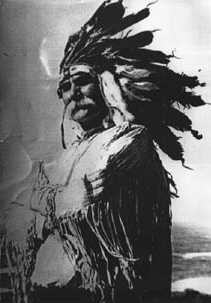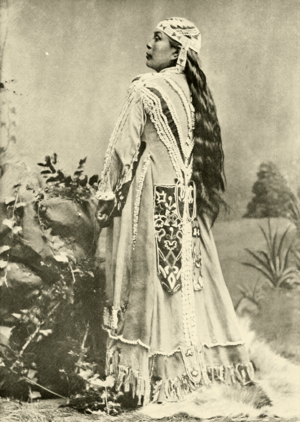Rogue River Indians facts for kids
The Rogue River Indians is a name given to many different Native American groups. These groups lived in the area around the Rogue River Valley in what is now Oregon. They spoke languages from three main language families: Athabascan, Takelma, and Shastan. A language family means that these languages are related to each other, like how English and German are related.
Who Were the Rogue River Indians?
The name "Rogue River Indians" was given to these groups by French Canadian fur traders. These traders worked for the Hudson's Bay Company. They called the Native Americans "coquins," which means "rogues" or "rascals" in French. This is where the name "Rogue River" comes from.
In the 1850s, it's thought that about 9,500 people belonged to these different groups.
Main Tribal Groups
The main tribes and bands often called Rogue River Indians included:
- Athabascan-speaking groups:
- Lower Rogue River Athabascan tribes, like the Upper Coquille (who called themselves Mishikwutinetunne), the Shasta Costa, and the Tututni. The Tututni included the Yukichetunne band.
- Upper Rogue River Athabascan tribes, like the Taltushtuntede and the Dakubetede.
- Takelman-speaking groups:
- Shastan-speaking groups:
- The Shasta (sometimes called Chasta).
Life After the Rogue River Wars
After the Rogue River Wars ended in 1856, many of these Native American groups were forced to leave their homes. They were moved to special areas called reservations.
Some groups went to the Siletz Indian Reservation. This reservation is north of their original lands. Other groups were moved to the Grand Ronde Indian Reservation. Both of these reservations are in Oregon.
Some tribal members were never captured during the wars. They were forced to live on their own, often moving from place to place. Today, many descendants of these groups are part of the Confederated Tribes of Siletz Indians and the Confederated Tribes of the Grand Ronde Community of Oregon.



